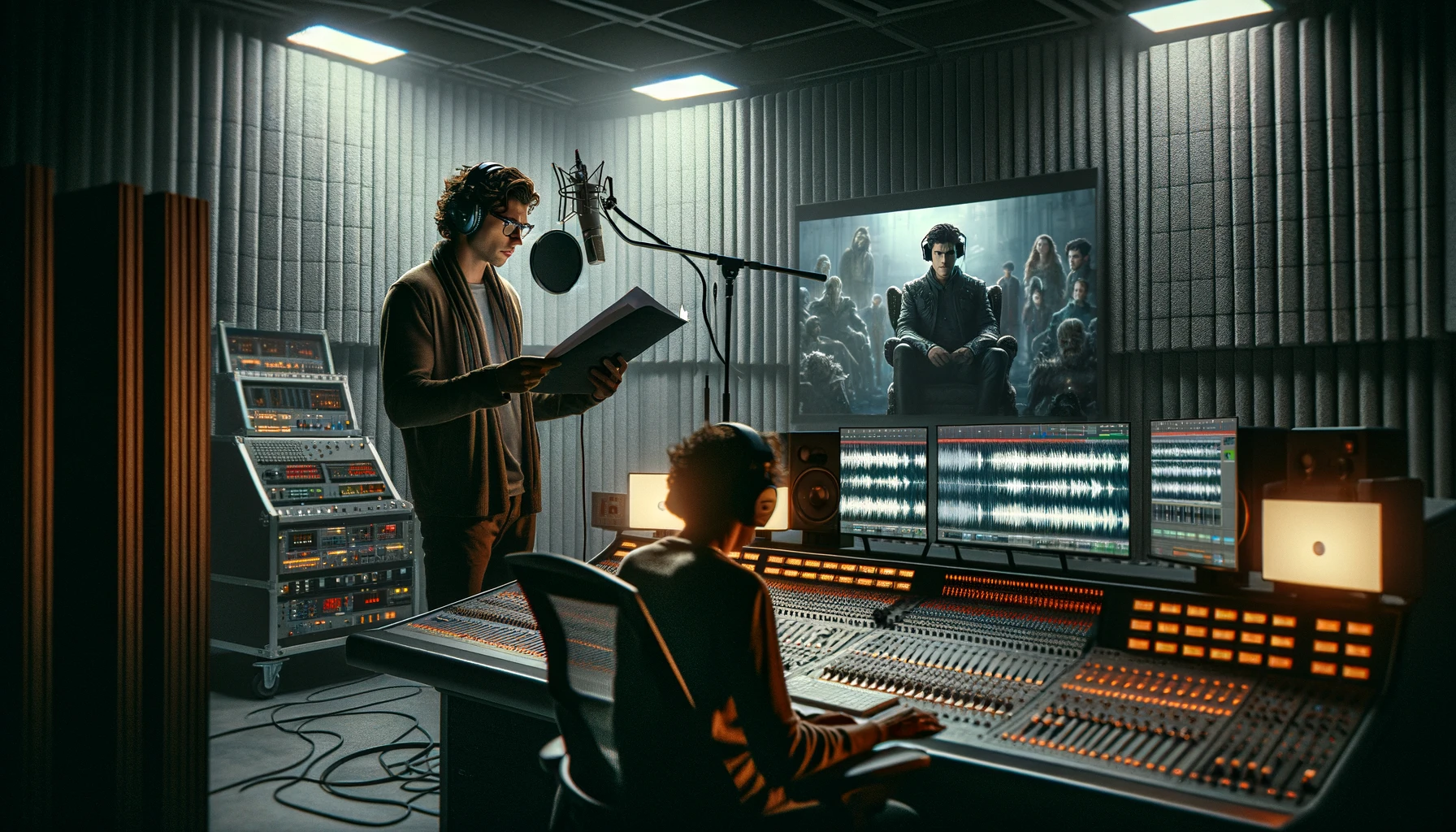Table of Contents
The process of dubbing, or replacing the original audio of a film or television program with a translated voice track, has become an essential part of the global media landscape. As content crosses cultural and linguistic borders, dubbing enables broader distribution and easier viewing comprehension.
Dubbing has gained even greater significance in recent years with the explosive growth of streaming platforms. By making high-quality international content available to worldwide audiences, services like Netflix and Amazon Prime Video have driven up demand for dubbed versions. The dominance of digital streaming has transformed dubbing from a niche service into an indispensable tool for expanding media access.
Rise of Streaming Services
The rise of on-demand streaming platforms like Netflix, Amazon Prime, and Hulu has led to an increased focus on providing quality dubbed content to global audiences. Whereas in the past, for example, Portuguese dubbing was often an afterthought for niche foreign film releases, it is now a priority for major streaming services looking to expand their reach worldwide.
Streaming allows convenient on-demand access for viewers, but that also means subtitles are not always ideal. Platforms are recognizing that if they want to capture broad international audiences who speak different languages, they need to invest more in high-quality dubbing.
Netflix in particular has been a leader in dubbing efforts. They operate dubbed productions out of studios in LA, Madrid, Berlin, Paris, and Tokyo. Netflix series and films are now available in over 30 languages, allowing true global penetration. Beyond studios, Netflix utilizes technology like machine learning to make dubbing more efficient and realistic.
Other streaming companies are following suit. Amazon Prime provides a selection of content dubbed in Spanish, Portuguese, French, Italian, and German. Hulu has partnered with Asian media companies to license locally dubbed content.
As streaming becomes increasingly dominant for entertainment consumption, dubbed content is becoming more ubiquitous. The competition for global audiences is pushing services to focus more on localization and dubbing efforts to maximize reach and engagement.
Advancements in Dubbing Technology
The process of dubbing has been revolutionized in recent years thanks to advancements in artificial intelligence (AI) and machine learning. These technologies are being applied in innovative ways to help improve lip synchronization, localization, and overall quality.
One of the biggest challenges in dubbing is having the translated audio properly sync with the character’s lip movements. This used to be an extremely tedious and time-consuming process, involving manually stretching and compressing segments of audio. Now, AI-powered software can automatically scan the original video, analyze the facial movements, and dynamically adjust the dubbed audio to achieve a much more natural fit.
Machine learning is also being used to create more context-aware translations that sound more natural to a local audience. The AI can study thousands of examples of colloquial speech and regional idioms to produce localized translations that better match the setting and characters. This helps the dubbing feel less disconnected from the original production.
The development of smart algorithms has enabled automated quality checks of the dubbing work as well. The software can evaluate factors like audio levels, grammatical errors, punctuation, and timing to ensure high standards. This allows studios to scale up output without compromising on quality.
As dubbing technology continues to rapidly evolve, it will open up opportunities to expand into new languages and regional markets previously seen as unviable due to the costs. The efficiency gains also enable quicker turnaround times to meet audience demand. Viewers around the world can expect more seamless and immersive viewing experiences as dubbing enters a new era.
Growth of Regional Dubbing Industries
The global rise of streaming has driven massive growth in regional dubbing industries outside the traditional hubs of the US and Europe. Markets like India and China have rapidly expanded their dubbing capabilities and quality to meet growing demand.
India has emerged as a major dubbing center for global content. Bollywood has long dubbed Hindi over Hollywood films to cater to local audiences. Now India’s dubbing talent is being tapped for streaming content. Top studios like Netflix and Amazon set up dubbing facilities in key Indian cities to dub shows and movies into regional languages like Tamil, Telugu, and Malayalam. This enables global platforms to penetrate India’s highly diverse linguistic markets.
China’s strict regulations require nearly all foreign content to be dubbed in Mandarin Chinese. As more US shows and movies enter China through streaming, there is huge demand for dubbing talent. This has expanded the country’s professional dubbing industry, with large recording studios emerging across major cities. China’s dubbing quality is considered high, with actors replicating not just words but emotion and intonation.
The exponential growth of dubbing in India, China, and other non-English markets has been a game changer. Streaming has unlocked the demand for specialized dubbing at scale across multiple languages and cultures globally.
The Future
Dubbing technology and practices will likely continue to advance as streaming grows globally. Some possible trends include:
- Increased use of AI and machine learning to automate parts of the dubbing process. This could enable faster turnaround times and cost savings. However, care must be taken to ensure quality.
- Growth of cloud-based tools for remote dubbing. This allows global collaboration, access to wider talent pools, and the ability to scale up quickly. Challenges around direction, timing and context remain.
- More dynamic dubbing that adapts to viewer preferences on the fly. For example, the ability to toggle languages, choose regional accents, etc. This hyper-personalization creates complexity.
- Expansion into augmented and virtual reality content, requiring 3D audio dubbing. This adds spatialization and environmental considerations.
- Mainstreaming of dubbing across more platforms and titles. Dubbing may become standard for all international releases, instead of just major films/shows.
- Increased cultural exchange as dubbing exposes more global audiences to foreign media. This could promote empathy and shared understanding. However, the impact on cultural identity remains debated.
- Backlash against excessive dubbing in some regions, in favor of subtitles. Purists may push back if dubbing is perceived as infringing on original creative visions.
The growth of worldwide streaming presents opportunities and challenges for dubbing. As technology progresses, the practice of dubbing will likely become more globally collaborative, personalized, and widespread. However, balancing creative intent, quality, and access will be an ongoing consideration. The human craft of voicing characters and stories for different cultures persists, even as AI and automation advance. Dubbing’s full impact on media diversity and globalization is still unfolding.
Final Thought
Throughout this article, we’ve explored how the rise of streaming and the growth of regional entertainment industries is driving innovation in dubbing around the world. From advancements in neural networks that can better mimic voices to preserving the original acting while adapting translations, technology is helping deliver a more authentic viewing experience for global audiences.

Liam Stephens is a dynamic and skilled blogger, recognized for his ability to identify trends and create compelling content. As the founder of Remi-Portrait.com, Liam has become a reliable source of information across various fields such as food, technology, health, travel, business, lifestyle, and current events. He specializes in delivering up-to-date technology news and insights, catering to the diverse community that surrounds Remi-Portrait.com. His proficiency and engaging writing style have earned him a dedicated audience, solidifying his reputation in the digital sphere.



